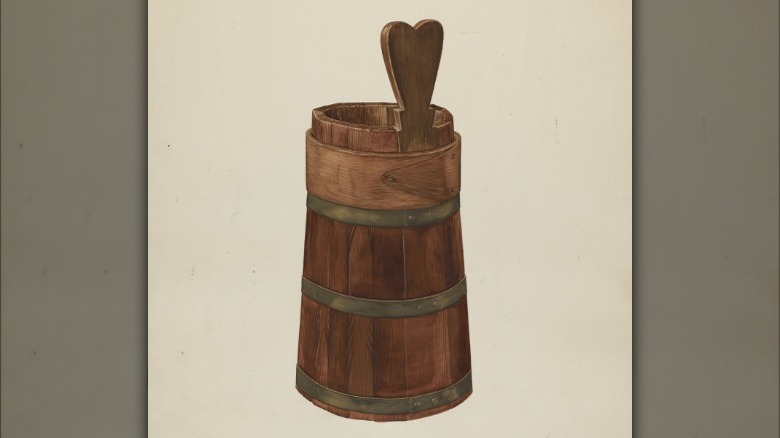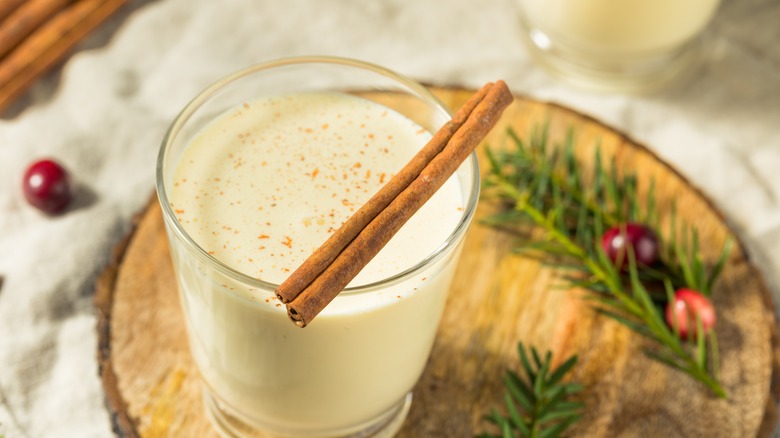How Did The Head Get The Nickname Noggin?
Sometimes in the course of researching a word you come across a conundrum so convoluted that it defies simple explanation. Not even the bottomless depths of the Internet can supply a simple answer of sufficient brevity to satisfy the curiosity of the quotidian reader. Instead, one must gather information from diverse sources, and use their noggin to make a coherent weave of the loose filaments of thread that abound online.
Such is the case with the slightly silly and archaic "noggin," a word that originally meant (as far as we can tell) a cup. But at some point along its journey from the 17th century to today, its definition got tangled up in alcohol, only to wake up and find itself in bed with a new meaning. Being an honorable word, however, it has maintained its association with the head or brain for over 200 years, a rare feat for slang.
From cup to head
The word noggin, according to the Online Etymology Dictionary, has its origin in the early 17th century, when it meant a wooden cup or mug — a drinking vessel. In "A French-English Dictionary" from 1650, a noggin is also defined as a drinking vessel, specifically with two handles. By 1770 it began to be associated more with alcohol, as we can see in George Saville Carey's "Analects in Verse and Prose" which has the line "Come let's have a noggin to cheer up the heart."
World Wide Words reports that the earliest attested use of the word noggin to mean the head comes from a 1769 play, in which it's said, "Giving him a stouter on the noggin, I laid him as flat as a flaunder." The Word Detective postulates that the change in meaning from "cup" to "head" could mirror the transition in meaning mug undertook, from cup to a slang word for face. Another intriguing possibility as to the source of this transition is hinted at in the 1899 "Word-book of Virginia Folk-speech," which lists noggin as a verb — meaning to cut the hair so it resembles a cup on someone's head.
Make it a double
At the same time all of this was playing out, "noggin" was making the same journey "cup" did, from being a mere drinking vessel to being a physical measurement. As early as 1690, "A New Dictionary of the Terms Ancient and Modern" defined a noggin as a quarter of a pint. Arthur Young's 1780 "A Tour in Ireland" explicitly says "A noggin is one-eighth of a quart," though the 1786 "Collectanea de Rebus Hibernicus" gives a measure as either one quart or a quarter pint.
By the 19th century the measure of a noggin would become a matter of law. According to early 19th century court records from Manchester a number of people were fined under the law for having "false and deficient measures" purporting to be either noggins or half noggins with the intent to "cheat and defraud all persons resorting to the said public house" of the proprietor. During one semi-annual court session 13 people were found to have falsified their noggins and were fined anywhere from one shilling to one pound.
Before noggin, there was knag
According to the 1899 "Transactions of the Philological Society," noggin is ultimately derived from the obsolete English word knag. Knag morphed into nog and has a couple of meanings that are interesting to explore. First off, it's another word for cask or keg which, like noggins, are wooden vessels for holding liquids. It's also a knot on a tree. If you're wondering what the connection is between tree knots and wooden cups, according to a 1915 article from Boys Life, you saw off the knot of a tree and hollow out the inside until you have a suitable cup.
The "nog" that meant a knot of a tree also came to mean any peg or pin on which to hang something (via The English Dialect Dictionary). Pins were once heated and used to warm alcoholic drinks, drinks that came to be known as nog. According to Dictionaries of the Scots Language, "to nugg" a drink is to heat it in this manner. Over time, people decided to put eggs, sugar, and milk into their nog and now people drink eggnog every Christmas (via Why Christmas?).



